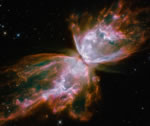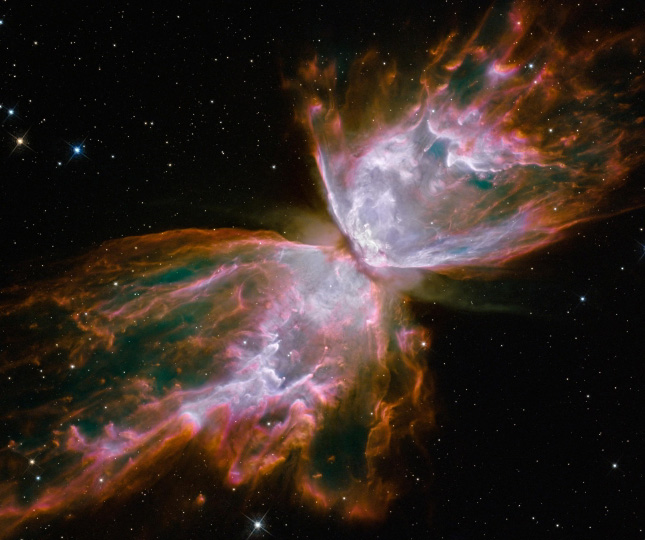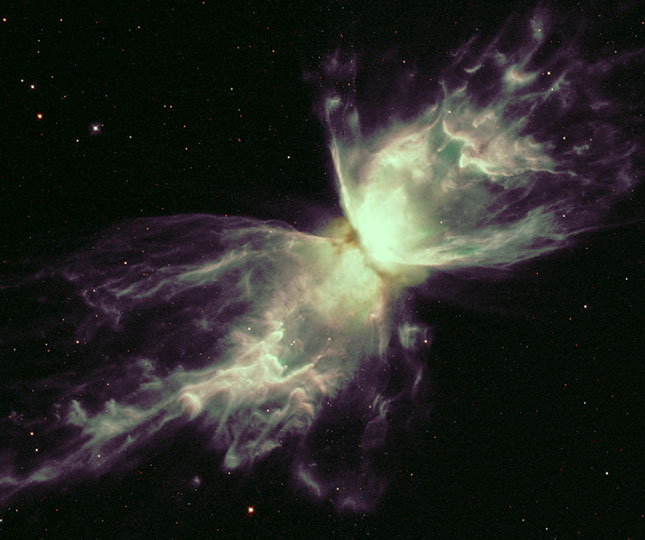 |
The Hubble Palette The Hubble Space Telescope is capable of imaging in very narrow wavelengths of light using various filters. This enables astrophotography to reveal details of objects in space that the human eye cannot easily see, if at all. |
Visible light spectra are measured in nanometers, as seen in this diagram which shows the wavelengths of light as they correspond to the colors we can see:
![]()
The colors of nebula result mostly from the various gases which glow or reflect light. Narrowband filters can isolate the specific color of these gases. Since most astrophotography cameras are monochrome (black and white), the colors must be arbitrarily assigned to the various images according to which filter was used.
The recent photo of the Butterfly Nebula is a great example. In this image the Hubble team assigned the following colors to the various wavelengths of light:
| 673nm ionized sulfur | White |
| 658nm ionized nitrogen | Orange |
| 656nm hydrogen alpha | Brown |
| 502nm doubly ionized oxygen | Cyan |
| 469nm ionized helium | Blue |
| 373nm ionized oxygen | Violet |

I thought it would be interesting to see what the image would look like if I assigned the actual colors that correspond to these wavelengths. So, I downloaded the image files from the Space Telescope Science Institute and went to work. Below is the less spectacular results.
| Wavelength/Element | Natural | Hubble |
| 673nm ionized sulfur | Red | White |
| 658nm ionized nitrogen | Red | Orange |
| 656nm hydrogen alpha | Red | Brown |
| 502nm doubly ionized oxygen | Blue/Green | Cyan |
| 469nm ionized helium | Blue | Blue |
| 373nm ionized oxygen | Violet | Violet |

What can I say? Not only is my version of the image less aesthetically pleasing, but it reveals less of the details of the nebula that are borne out by the artificial Hubble palette. So, is it deceitful for the Hubble team to use artificial colors? Not really. After all, some of the natural colors are not that visible to the human eye. The 373nm filter is actually picking up light that is somewhat toward the ultraviolet, which our eyes cannot detect. Much of what is going on in this nebula is in the ultraviolet. Also, our eyes see everything from 650nm to 750nm and beyond as simply red. Red, however, doesn't reflect the fact that the data collected for this range of wavelengths includes the glow of super-hot sulfur, nitrogen and hydrogen.